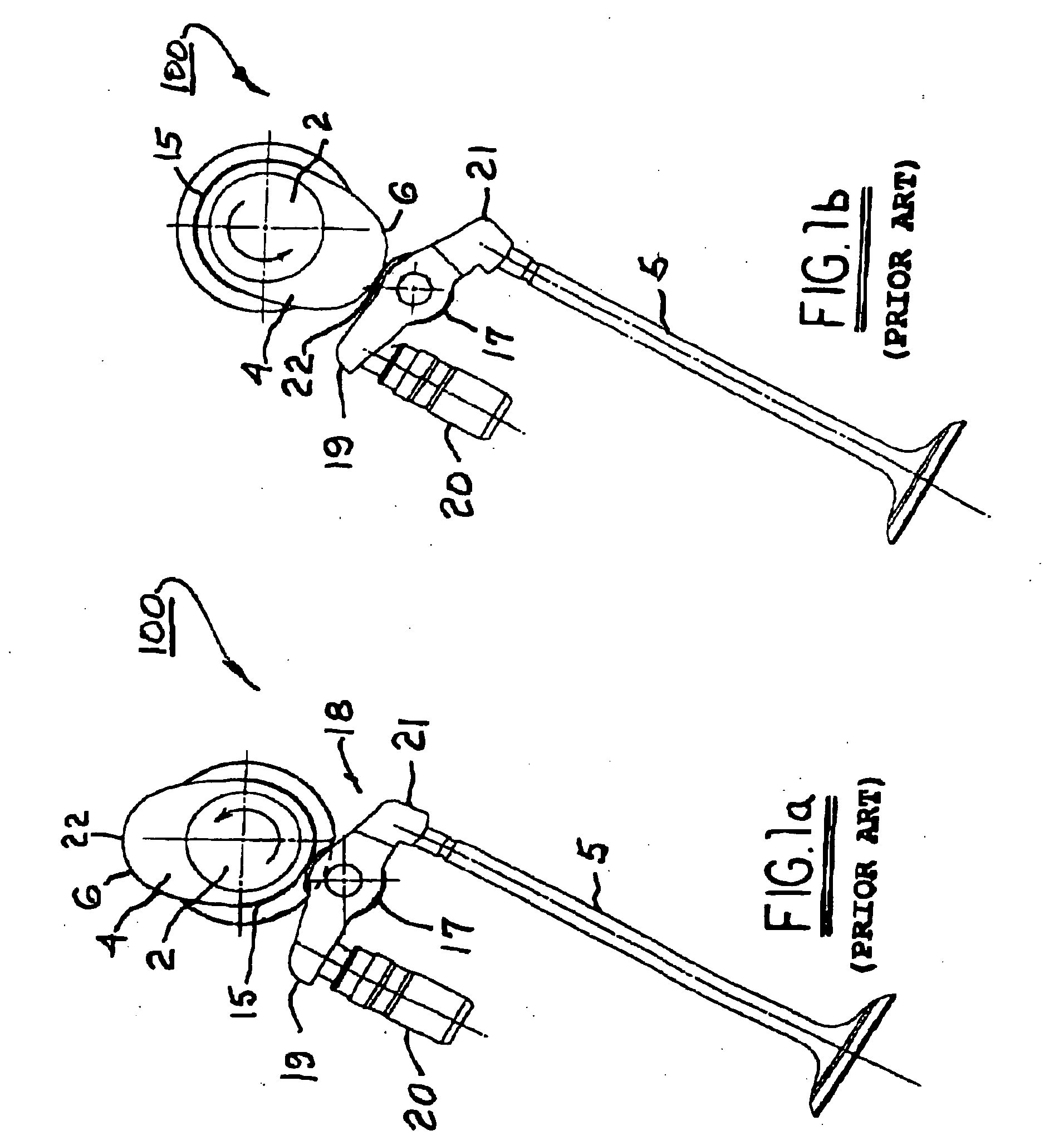System for variable valvetrain actuation
a variable valvetrain and valvetrain technology, applied in the direction of valve details, valve arrangements, valve drives, etc., can solve the problems of requiring significantly more power than a conventional fixed-state engine, the cost of a “camless” system is usually on par with the cost of an entire conventional engine itself, and the total mass moment of inertia is much lower. , the effect of less challenge in spring design
- Summary
- Abstract
- Description
- Claims
- Application Information
AI Technical Summary
Benefits of technology
Problems solved by technology
Method used
Image
Examples
Embodiment Construction
[0039] The benefits and advantages of a VVA system in accordance with the invention may be better appreciated by first considering a prior art engine valvetrain without VVA.
[0040] Referring to FIGS. 1a and 1b, a prior art valvetrain 100 comprises an input engine camshaft 2 having a cam lobe 4. Lobe 4 is defined by a profile having a base circle portion 15, an opening flank 6, and a nose portion 22. A roller finger follower (RFF) 18 includes a centrally mounted roller 17 for following cam lobe 4 and is pivotably mounted at a first socket end 19 on a hydraulic lash adjuster 20. A second pallet end 21 of RFF 18 engages the stem end of an engine valve 5. When RFF 18 is on the base circle portion 15, valve 5 is closed, as shown in FIG. 1. As camshaft 2 rotates counterclockwise, RFF 18 begins to climb opening flank 6, forcing valve 5 to begin opening. When RFF 18 reaches nose portion 22, valve 5 is fully open, as shown in FIG. 2. Further rotation of camshaft 2 causes valve 5 to gradually...
PUM
 Login to View More
Login to View More Abstract
Description
Claims
Application Information
 Login to View More
Login to View More - R&D
- Intellectual Property
- Life Sciences
- Materials
- Tech Scout
- Unparalleled Data Quality
- Higher Quality Content
- 60% Fewer Hallucinations
Browse by: Latest US Patents, China's latest patents, Technical Efficacy Thesaurus, Application Domain, Technology Topic, Popular Technical Reports.
© 2025 PatSnap. All rights reserved.Legal|Privacy policy|Modern Slavery Act Transparency Statement|Sitemap|About US| Contact US: help@patsnap.com



